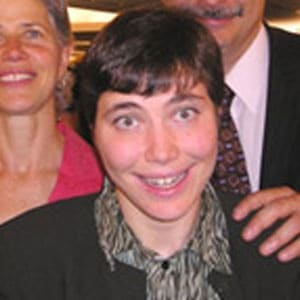If I told you about the 20 different drugs that didn’t work, their horrendous side effects; countless hospitalizations and medical procedures, the brain stimulation, the special diets, the five hour neurosurgical procedure during which they bored seven holes in her skull, implanted electrodes directly onto the surface of her brain and withdrew medication to bring on seizures, all to determine whether or not they could perform a corrective surgery—which they eventually concluded they couldn’t—that still wouldn’t adequately describe it.
If I told you of the days Lauren would suffer over 25 seizures a day, waking up in between only long enough to feel another seizure coming on and scream out in terror “Mommy, make them stop” and I couldn’t do a thing. . .
If I told you about watching her deteriorate cognitively as the seizures wreaked havoc on her developing brain. . .
Or, if I told you how it felt the day five years ago when she moved into a supported living arrangement because she cannot live independently due to the brain damage caused by all the seizures, I still don’t think I would have adequately described the horror of this disease and what repeated and uncontrollable seizures do to rob children of their potential, and parents of their dreams and hopes.
Epilepsy is the second most common neurological disease. For far too long, it has been misunderstood as a treatable, benign condition. Three million Americans are affected; many of them children; many severely impacted. Tens of thousands lose their lives every year.
Two nights ago I received a late night e-mail from a mom I’d met whose five year old son has just begun to have seizures. She wrote:
“We just returned from a week at Children’s Hospital . . . again. This time, my son started cluster seizures and it took days to get it under control. Now we are living with some pretty bad side effects—vomiting, metabolic acidosis and erratic behavior, to name a few. It is amazing how little could be done to stop Evan’s seizures. It took six days and he spent several days awake for only an hour or two. I wish our story was unique, but I know it is not.”
I receive these emails and calls all the time. I’m terrified for this family and for Evan’s future. It’s unacceptable that today, 25 years after my daughter was born, we still don’t have answers to this age-old problem. It’s unacceptable that so very often we can still only watch helplessly as young lives are devastated.
So, again, I am very grateful for this recognition tonight, but want to leave you with the understanding that we have a very long way to go in our understanding of this disease and in the search for a cure. We must continue this fight on behalf of all children, like Lauren, who lighten up rooms with their smiles.
They deserve much better





